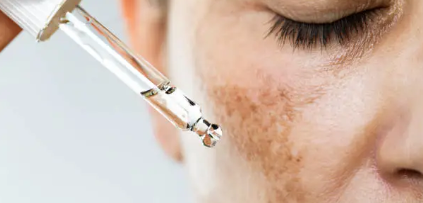Are you considering combining Retin-A with red light therapy? You’re not alone. Many wonder if these two treatments can be used together for maximum benefits.
Retin-A, a popular topical medication, is known for its effectiveness in treating acne and reducing wrinkles. It works by increasing cell turnover and stimulating collagen production.
On the other hand, red light therapy uses low-level wavelengths of red light to improve skin health and reduce inflammation.
The question is, can these two treatments work in harmony? The answer is yes! Retin-A and red light therapy can complement each other.
While Retin-A works on a cellular level, red light therapy can enhance its effects by promoting blood flow and accelerating healing.
Combining these two powerful treatments, you may experience even more excellent results in achieving clear and youthful skin.
What is Retin-A?
Retin-A is like a powerful potion for your skin, working its magic to smooth out imperfections and reveal a radiant complexion. It is a brand name for tretinoin, a form of vitamin A used topically.
Retin-A is primarily prescribed to treat acne but also has anti-aging benefits. It works by increasing cell turnover, which helps to unclog pores, reduce fine lines, and even out skin tone.
Many people wonder if they can use Retin-A with red light therapy. The good news is that these two treatments can be used together. Red light therapy helps to stimulate collagen production and improve skin texture, while Retin-A enhances these effects by promoting cell renewal.
However, it’s always recommended to consult a dermatologist before combining treatments to ensure they suit your skin type.

How Retin-A Works
Retin-A, this powerful acne treatment, when applied to the skin, works by boosting cell turnover and creating a smoother, more youthful complexion. It contains a form of vitamin A that helps unclog pores and reduce oil production, which can contribute to acne breakouts. Retin-A also promotes the production of collagen, a protein that helps to keep the skin firm and elastic. By increasing collagen production, it can help to reduce the appearance of fine lines and wrinkles.
Additionally, Retin-A has been shown to fade dark spots and improve overall skin tone. It’s important to note that Retin-A can cause some initial side effects, such as redness and peeling, but these usually subside with continued use.
The Interplay Between Retin-A and Red Light Therapy
Combining Retin-A and red light therapy creates a powerful synergy that enhances the skin’s rejuvenation process and promotes a youthful appearance. Retin-A, a topical medication containing retinoids, increases cell turnover and stimulates collagen production, leading to smoother and firmer skin.
On the other hand, red light therapy utilizes low-level wavelengths of red light to penetrate deep into the skin, promoting healing and reducing inflammation. When used together, Retin-A and red light therapy can work in harmony to maximize their benefits.
The retinoids in Retin-A can help prepare the skin for red light therapy by improving its ability to absorb the light. Additionally, the anti-inflammatory properties of red light therapy can help counteract any potential irritation caused by Retin-A.
Combining these two treatments can help rejuvenate your skin and give you a more youthful appearance.
Combining Retin-A and Red Light Therapy for Skin Health
Combine Retin-A with red light therapy to enhance skin health and create a radiant glow. Retin-A, a topical medication containing tretinoin, is known for treating acne, reducing wrinkles, and improving skin texture.
On the other hand, red light therapy uses low-level red light to stimulate collagen production, reduce inflammation, and promote healing. Retin-A and red light therapy can complement each other’s effects and provide even better results when used together.
Retin-A increases cell turnover and promotes collagen synthesis, while red light therapy boosts collagen production and enhances cellular regeneration. By combining these two treatments, you can maximize the benefits for your skin.
Start by applying Retin-A as directed by your dermatologist. Then, incorporate red light therapy sessions into your skincare routine. Follow the recommended guidelines for red light therapy, including the duration and distance from the device.
Remember, consistency is critical when using Retin-A and red light therapy. It may take some time to see noticeable improvements, but with patience and regular use, you can achieve healthier, more radiant skin.
Enhanced Collagen Production
Boost your skin’s natural collagen production by incorporating Retin-A and red light therapy into your skincare routine. This will give your complexion a youthful, plump appearance. Retin-A, a topical form of vitamin A, works by increasing cell turnover and stimulating collagen production. Red light therapy, on the other hand, uses low-level wavelengths to penetrate the skin and promote collagen synthesis. When used together, these two treatments can synergize, enhancing collagen production and improving your skin’s overall texture and elasticity.
Retin-A helps to remove dead skin cells and unclog pores, allowing the red light therapy to penetrate deeper and maximize its collagen-boosting benefits. Regularly using Retin-A and red light therapy can achieve firmer, smoother, and more radiant skin.

Conclusion
In conclusion, you can use Retin-A with red light therapy. Retin-A, a topical medication, helps to improve skin texture and reduce wrinkles by increasing cell turnover.
Red light therapy, on the other hand, uses low-level red light to stimulate collagen production and promote healing.
When used together, Retin-A and red light therapy can complement each other and enhance the overall benefits for your skin. So go ahead and incorporate both into your skincare routine for maximum results!
